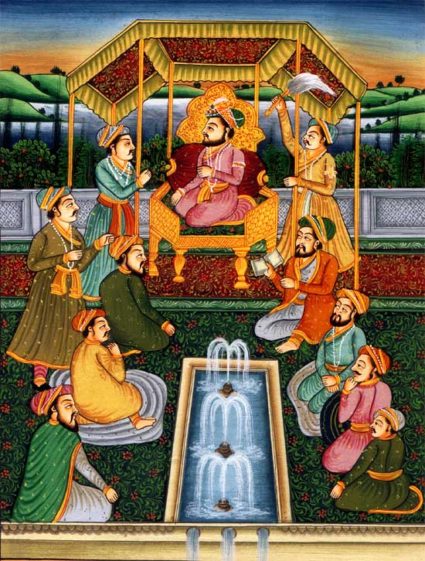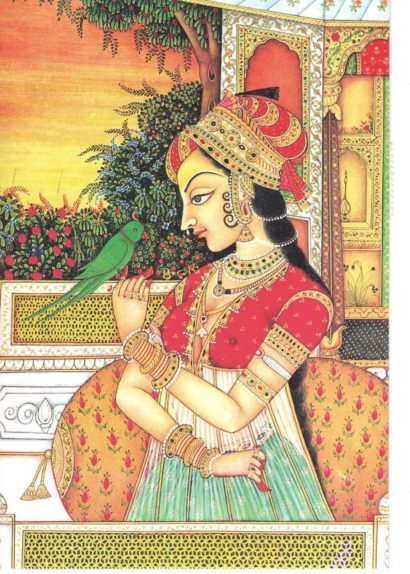Mughal Paintings, Hindu and Persian Styles
Mughal Paintings and Its Evolution:
Mughal Paintings in India are still very famous and flourished during the Mughal Rule, dating back to the sixteenth and eighteenth centuries. The Mughal rulers played the patron role in bringing the painting style into the limelight.

After establishing the Mughal Dynasty in Delhi in the 16th century, the Mughal emperors ruled much of India. Especially the Mughal Paintings flourished during the rule of Emperor Akbar Jahangir, and the painting tribute peaked during Shah Jahan’s reign. The lifestyles of Akbar, Jahangir, and Shah Jahan were abruptly picturised with the style of Mughal Paintings. These paintings form a blend of the Indian and Persian styles. The artists also adopted several themes from the lifestyles and activities of Mughal Emperors, so the name Mughal paintings came into existence. Generally, the images picturised the events in the lives of Mughal emperors, portraits, scenes of the life of the courts, the emperors hunting scenes and instances of battles.
History of Mughal Paintings:

Historically the paintings of India developed during the period of Humayun. When he regained his throne in India from his exile to Delhi, The king brought the great Persian artists Abd-us-Samad and Mir-Sayyid Ali from Persia. The local style of art influenced the two grThe local style influenced the two great Persian artistsersia. These combined styles of Persian and Indian art forms came into existence profoundly due to the support of Mughal emperors. So that this style of art has been calling as the Mughal paintings. The Tutinam image and the ‘tales of a Parrot’ are famous pictures. We can see these painting styles at the Cleveland Museum of Art. Another ‘Princess of the House of TImmur’ is renowned for Painting, and many artists have copied this theme many times.
The decline:
All the Mughal Emperors encouraged the artists the development their paintings. However, Aurangzeb didn’t seem interested in the development and growth of Mughal images. Since then, the decline of Mughal images started slowly in the next generations of the Mughal Empire. During the rule of Mughal Emperor Shah Alam II, Mughal artworks were thoroughly unpopular. The patrons of the art sutterlyappearing, so the artists were not interested in these paintings. During the eighteenth century, the Mughal Painting styles were put aside, and the new painting styles of Rajput began to evolve.